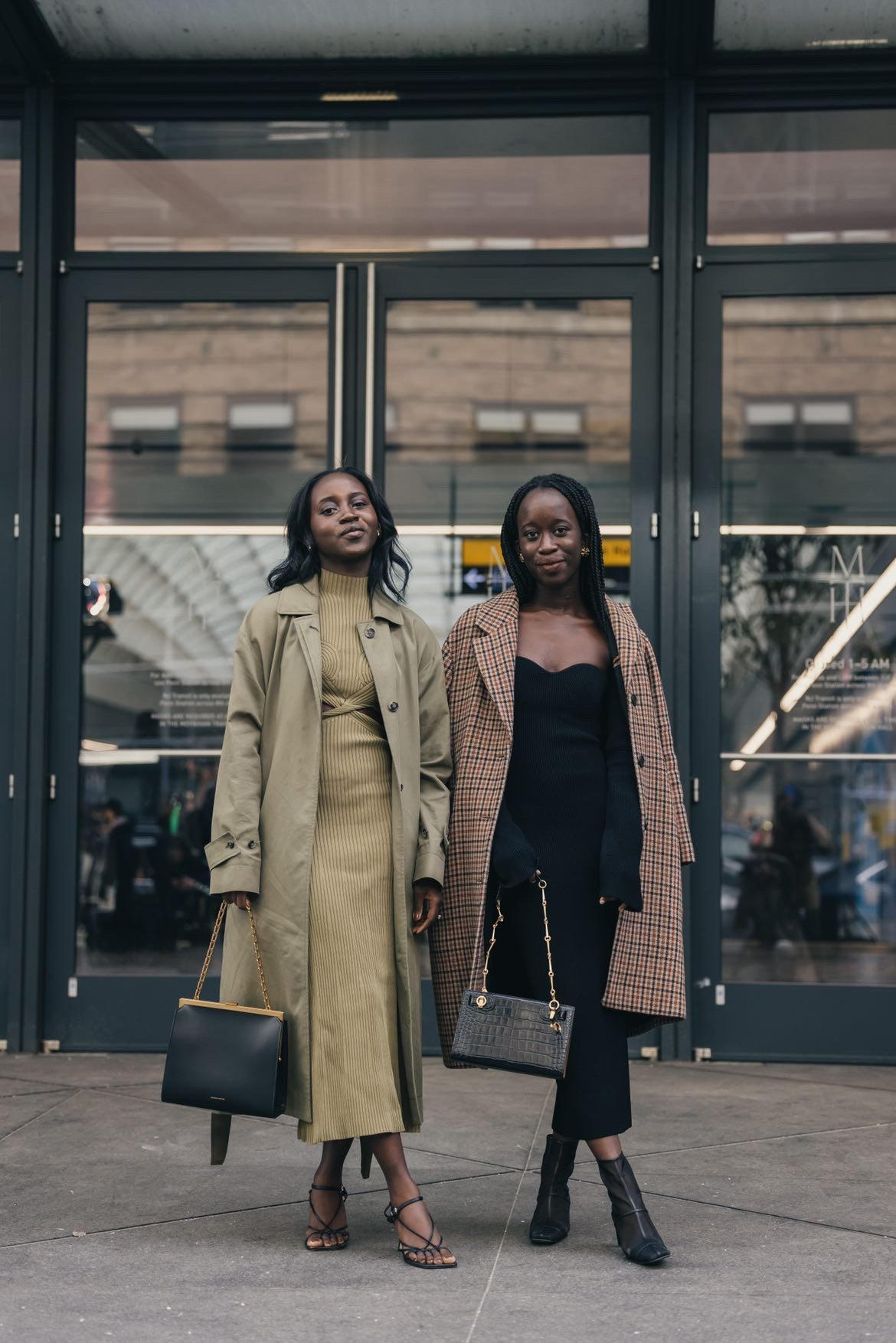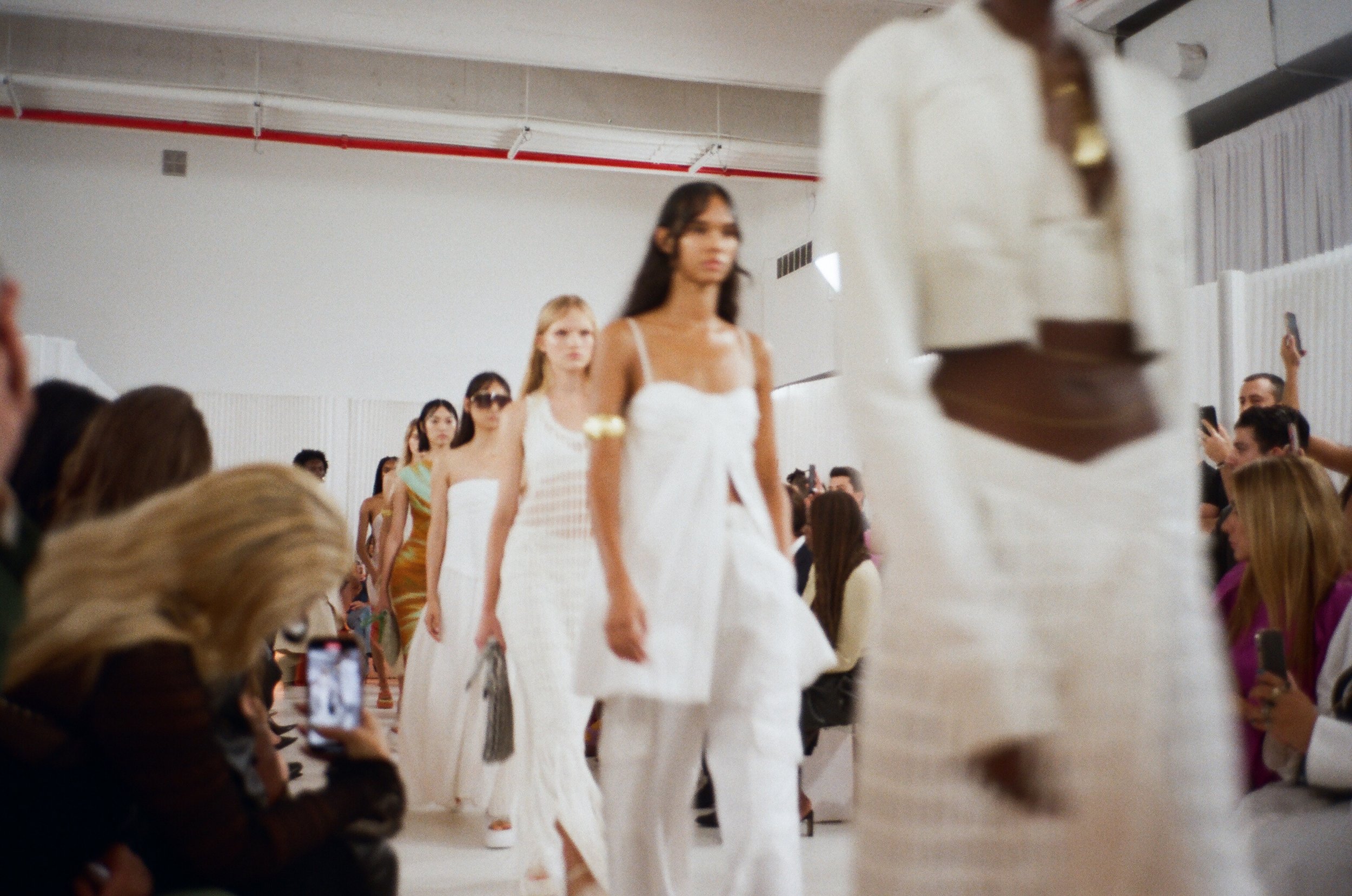Let’s Have a Real Talk About New York Fashion Week
Beyond the glossy runway shows and street style photos, it can be a cutthroat place to navigate.
Photo by Sophie Sahara
In the fall of 2017, I set out to attend New York Fashion Week, head full of dreams and snapshots from Vogue Runway. After a somewhat successful Google search, my sister and I reached out to the three PR agencies we could find. “You’re in,” one email read a week later. We couldn’t believe it. “Does this mean we’ll actually get to see the show?” we replied. The PR rep Janelle must have thought we were such newbies! “Yes, seat assignments to arrive closer to the show,” she kindly wrote back.
Just like that, the door to a whole new world had opened in front of us. And as it happens sometimes when you do something brave and the universe sends you a nudge, we got invited to the Tory Burch show a season later.
Enter these two Haitian immigrants. We didn’t realize it then, but that moment signaled a shift in public acceptance of fashion bloggers as credible authority figures. It’s mostly thanks to social media, which allowed for easier access to shows and facilitated discovery of thought leaders. As brands started paying attention, a select group of Instagram and TikTok stars found themselves sharing the front row with celebrities and editors.
As exhilarating as New York Fashion Week is, it can also be intimidating and downright stressful.
Photo by Christy Joseph//@filmpicsbychris
What It’s Like to Attend a New York Fashion Week Show
Most shows typically last seven minutes, so New York Fashion Week is just as much about what happens before and after. Dressing to get photographed; waiting in line; being shown to your seat; socializing inside the venue; and documenting it all on social media; these moments are just as central to the experience. All the glitz and glam aside, what I love most is the rush of excitement I get before a show begins. When the lights turn low and silence wraps up the room, I’m ready to absorb every detail on the catwalk. I gasp at color palettes, silhouettes, fabric choices and styling tricks. It’s pure magic.
Photo by Christy Joseph//@filmpicsbychris
While I keep up with the collections of household names, I like to pay special attention to younger labels on the calendar. That’s because staging a show is so cost-prohibitive that it naturally leaves out many talented designers. While they don’t all follow the traditional schedule, these names are worth paying attention, including Christopher John Rogers for his unrivaled use of color; Victor Glemaud for the way he infuses his Haitian heritage into his craft; Peter Do for his deconstructed take on menswear; Laquan Smith for his decadent vision; Theophilio and Marisa Wilson for the sentimentality of their clothes; and Elena Velez for her unique ability to convey difficult emotions.
Photo by Patrizia Messineo
“Attending New York Fashion Week can be a fun and empowering or demoralizing experience, depending on who you are.”
The Good, the Bad and the Ugly
Attending New York Fashion Week can be a fun and empowering or demoralizing experience, depending on who you are. A-list celebrities take priority as many brands figured out that their presence—more than the collections—can create a viral moment. If you’re a top luxury brand ambassador, the latest TikTok star or a top editor, you can also anticipate a similar level of reverence.
If on the other hand, you are a small creator or a junior editor (as I’ve once been) at a less trendy fashion website, go ahead and take the seat in the back, and don’t expect to get a ticket to all your shows (unless you know someone who knows someone). Your treatment is based on your perceived level of importance, which is tied to how much social and economic capital you have.
The fashion industry is notorious for gatekeeping and advancing those already born into privilege. Wherever you fall in the status ranking system, your experience at Fashion Week (and in society at large) is likely to stay the same. And moving up the ladder is more difficult for some than others. If fashion is for everyone, why is there so much emphasis on who people are and what they look like? Why have runways and campaigns remained so stubbornly homogeneous? As journalist Eugene Rabkin put it, “The industry’s economic and cultural impact is vast, but behind its forward-looking veneer is an essentially conservative industry, slow to change, often paying lip service while doing its best to maintain the status quo.”
Even when you reach some level of success (read: acceptance) as a minority, micro-aggressions have a way of bringing you back to reality. At our first big NYFW show for example, a staff worker rudely stopped us at the door. “Do you work here?” she asked. “No actually,” I snapped back with a smile. The brand rep came to greet us shortly after.
The emotional toll doesn’t always stop there. You may be unlucky and run into so-called friends who are only after what you can do for them, or peers who seem warm online but act standoffish when you approach them. There are also people who pretend to like you in person, but they never like or interact with your Instagram posts. Cutthroat competition is the name of the game for some.
“Why bother at all?” you might ask. Because New York Fashion Week is genuinely a good time for those who love clothes. Find your group of friends. Dress all the way up. Take IG-worthy pics. Drink too much champagne at parties. And most importantly, be intentional about the places you go and the people you show up for.
Photo by Patrizia Messineo
The Future of Fashion Week
In many ways, our story challenges the odds because through a combination of skill, motivation and hard work, we’ve figured out how to excel in spaces that are traditionally closed to people with our skin color. Things can happen for those who want to thrive in fashion, but don’t have unlimited funds or a high-profile network to tap into.
Every season, I walk into rooms hoping to see more people of color in front-row seats, on the runway and behind-the-scenes, and I pray that they get treated with dignity. But I’m often reminded of how long change can take.
The good news is, progress is happening. The increasingly diverse New York calendar is one place where it’s starting to show. As consumers and people in the industry continue to challenge the status quo, the change is inevitable. So we continue to look for the signs, hoping that one day we won’t need to.




